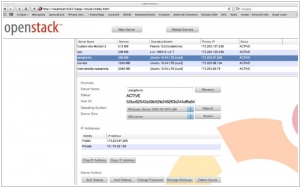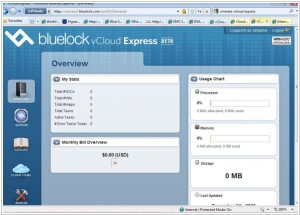OpenStack vs VMware vCloud
March 09, 2025 | Author: Michael Stromann
19★
OpenStack is a global collaboration of developers and cloud computing technologists producing the ubiquitous open source cloud computing platform for public and private clouds. The project aims to deliver solutions for all types of clouds by being simple to implement, massively scalable, and feature rich. The technology consists of a series of interrelated projects delivering various components for a cloud infrastructure solution.
11★
Start moving toward secure cloud computing with VMware vCloud solutions and services. Leverage the power of cloud computing while retaining the flexibility and open standards to support your existing IT infrastructure. Enabling IT as a service through cloud computing gives you a more efficient, flexible and cost-effective model.
See also:
Top 10 Public Cloud Platforms
Top 10 Public Cloud Platforms
Cloud computing is a marvelous thing, mostly because it allows large numbers of people to argue passionately about which platform is better while their workloads carry on existing in an entirely indifferent manner. OpenStack and VMware vCloud both promise to create, manage and generally keep an eye on virtual machines as they go about their business. They offer multi-tenancy, automation and APIs, all of which are words that make IT departments feel vaguely futuristic. Both claim to make the cloud more manageable, which is a bit like claiming to make the ocean more manageable—an admirable goal, if a touch ambitious.
OpenStack, being open-source, is the cloud equivalent of a DIY kit that comes with a friendly but cryptic instruction manual and an enthusiastic community of fellow builders. It was born in 2010 from a collaboration between NASA (yes, that NASA) and Rackspace, because clearly, controlling virtual machines is only slightly less exciting than sending things into space. It appeals to those who enjoy extreme configurability, running multiple hypervisors and the thrill of possibly breaking something very important while tweaking YAML files. Its modular nature is fantastic for customization, provided one has both the patience of a saint and a strong grasp of networking.
VMware vCloud, on the other hand, was first unleashed upon the world in 2008 and is the corporate equivalent of a well-mannered but slightly expensive butler who insists on doing everything just so. Unlike OpenStack, it doesn’t concern itself with trivialities like multiple hypervisors, because if you’re using VMware, you’re using VMware and that’s that. It’s tightly integrated with vSphere, meaning enterprises can bask in the warm, comforting embrace of VMware’s ecosystem without worrying too much about configuration nightmares. It’s particularly good for businesses that want their cloud infrastructure to simply work without requiring ritual sacrifices to the documentation gods.
See also: Top 10 Public Cloud Platforms
OpenStack, being open-source, is the cloud equivalent of a DIY kit that comes with a friendly but cryptic instruction manual and an enthusiastic community of fellow builders. It was born in 2010 from a collaboration between NASA (yes, that NASA) and Rackspace, because clearly, controlling virtual machines is only slightly less exciting than sending things into space. It appeals to those who enjoy extreme configurability, running multiple hypervisors and the thrill of possibly breaking something very important while tweaking YAML files. Its modular nature is fantastic for customization, provided one has both the patience of a saint and a strong grasp of networking.
VMware vCloud, on the other hand, was first unleashed upon the world in 2008 and is the corporate equivalent of a well-mannered but slightly expensive butler who insists on doing everything just so. Unlike OpenStack, it doesn’t concern itself with trivialities like multiple hypervisors, because if you’re using VMware, you’re using VMware and that’s that. It’s tightly integrated with vSphere, meaning enterprises can bask in the warm, comforting embrace of VMware’s ecosystem without worrying too much about configuration nightmares. It’s particularly good for businesses that want their cloud infrastructure to simply work without requiring ritual sacrifices to the documentation gods.
See also: Top 10 Public Cloud Platforms





